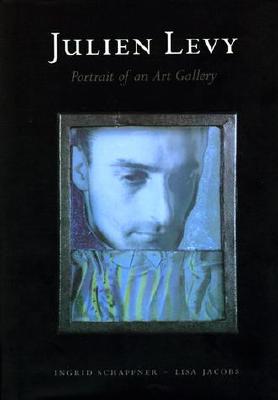
Nelson George
Viking ($24.95)
by Peter Wardrip
Around 1992, Tommy Hilfiger came upon a chance meeting with the rapper Grand Puba in New York's JFK airport. Tommy, of course, is currently a leader in the youth apparel industry, but at the beginning of the decade he and his clothing line were still trying to find their place in an already crowded market. Tommy's brother, Andy, recognized Grand Puba and knew that the rapper spoke highly of their clothing. Andy introduced the two and because of this meeting, Grand Puba and his crew were given a gratis shopping spree in their showroom.
Nationally, Grand Puba may not have carried the popularity in 1992 that someone like Puff Daddy does today, but he was extremely popular in New York City. He had just broken off from the successful group Brand Nubian to attempt a solo career, and at the time his voice was ubiquitous on rap albums. When Grand Puba was seen wearing Hilfiger, the trend spread throughout the country on the shoulders of rap music and hip-hop culture.
Hip-hop's influence on American culture is extremely strong today. Bits of hip-hop are pervasive whether through rap songs in the top ten or Will Smith's starring in big-budget action movies. Novelist, cultural critic, and music critic Nelson George, author of the much lauded The Death of Rhythm and Blues, describes hip-hop's influence on American culture in his latest book, hiphopamerica. This cultural, critical, and historical text is approachable and smart.
Rapper Krs-One was one of the first people to articulate the difference between hip-hop, which is a culture, and rap music, which is simply a style of music within that culture. Other aspects of the culture traditionally involve deejaying, breakdancing, and graffiti. However, with the influence hip-hop has had on mainstream American culture, it becomes more difficult to exclude other aspects such as fashion, movies, videos, poetry, journalism, and politics. What began as a largely urban phenomenon has gone the way of just about every form of business: global.
"Hip-hop didn't start as a career move, but as a way of announcing one's existence to the world," writes George. Although reports differ about who started what is now known as rap music, it is agreed that giants like Afrika Bambataa and Grandmaster Flash created what would become rap music when they deejayed parties in the early to middle '70s. These auteurs would play only the beats (the breaks) from popular rock, soul, and disco records. At first, words were spoken over the beats to energize the dancers, but gradually the evolution of rhythmic poetry developed, putting the rapper at the center stage and sending the deejay to the background.
As the music began to grow in popularity, so did other facets of the culture. Run DMC were endorsed by Adidas and had a hit single with Aerosmith. The Two Live Crew's booty-shaking lyrics brought about a national debate about freedom of speech and public decency. Different parts of the country developed their own brands of hip-hop. With this diversity came the infamous East Coast/West Coast feud which brought about the deaths of Tupac Shakur and the Notorious B.I.G.
Nelson George does not go through a chronological history of hip-hop. (For that I would recommend The New Beats by S. H. Fernando.) Instead his mosaic shows influences that develop positive and negative aspects of hip-hop culture. He is able to situate hip-hop in a social, political, and cultural context. Hip-hop does not stay put in an inner-city domain, which represents much of its aesthetic foundation, nor does it completely sell out to suburbia, its largest customer. The shiny mixture of the two is what makes it so marketable and popular. The adaptability and diversity of hip-hop culture allows it to praise nihilism and vitality, materialism and simplicity, guns and peace—all at the same time.
As an involved observer for the past 15 years or so, George writes about the culture with an unabashed love. He has been an insider, but is also able to be critical of the lesser portions. He criticizes the violence, materialism, and black stereotyping, as well as the increasing influence of the visual aspects. Although videos have brought about a new breed of African-American filmmakers, George writes, "video just changed the hip-hop environment enough so that more sucker MC's have hits, taking up space from worthier artists." Videos make neighborhoods, cars, hairstyles, dances, and clothes world famous.
Is hip-hop better off than it was 20 years ago? Nelson George, I think, would argue that it is. He probably yearns at times to see pioneers like DJ Hollywood like he did back in 1981 and, like many of us at that time, to be mesmerized by the freshness of this new genre. We can all be nostalgic about the times when we could keep up with what was new in the music with five monthly releases instead of 50. George doesn't sour his book with nostalgia, but even he ponders, "what will come after hip-hop?" George posits that the next generation could reject hip-hop as the next wave of hipness comes by, but it doesn't seem likely; just a new form of the old. "The truth is that hip-hop—in its many guises—has reflected (and internationalized) our society's woes so evocatively that it has grown from minority expression to mainstream appreciation."
Enter Tommy Hilfiger again. Four years after his meeting at JFK with Grand Puba, he had adapted his clothing line to the youthful hip-hop market. He became buddies with hip-hop mogul Russell Simmons and black music impresario Quincy Jones, becoming a strong supporter of his Vibe magazine. In 1996, Tommy Hilfiger was the number one apparel company traded on the New York Stock Exchange.
Rain Taxi Online Edition, Spring 1999 | © Rain Taxi, Inc. 1999










